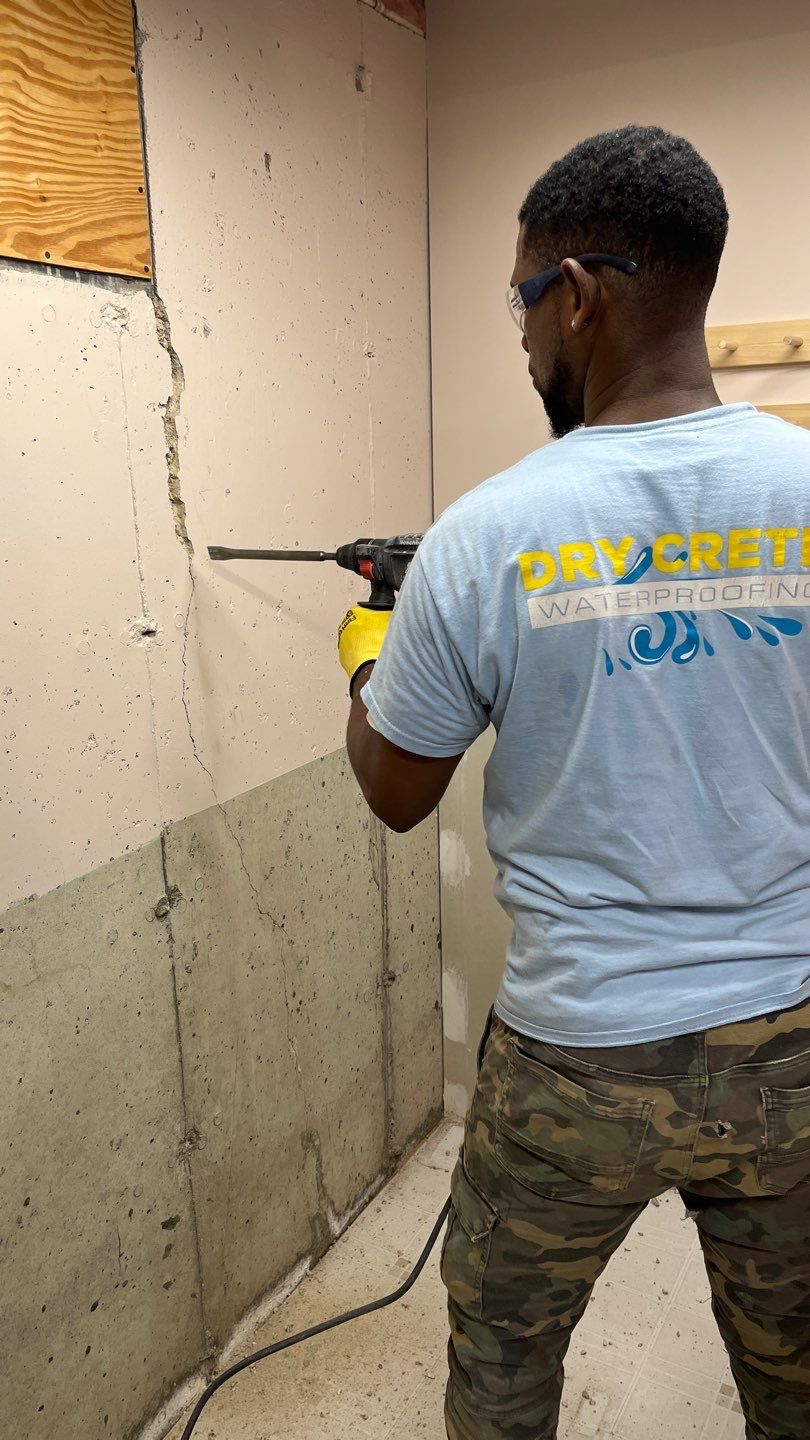Foundation cracks are a common source of water intrusion and they won’t fix themselves. At Drycrete Waterproofing, we seal leaking cracks with DRY-SEAL, our high-performance injection system designed to permanently bond and block water pathways. Every repair is backed by a 10-year transferable warranty, so you can trust the fix will hold.
Most foundation wall cracks form during the natural settling of your home. As the structure adjusts in the first several years after construction, small shifts in the soil can create thin fractures in the concrete.
Over time, repeated freeze/thaw and wet/dry cycles allow moisture to seep into those cracks. That moisture expands and contracts, gradually widening the gap and creating a path for water intrusion.
These cracks are usually not structural unless you see deflection or inward movement. But if left untreated, they can grow and lead to basement leaks or more costly repairs down the line.
At Drycrete Waterproofing, we seal foundation cracks using our proprietary DRY-SEAL™ injection system. This two-part solution includes:
DRY-SEAL™ 5000 for wider cracks
DRY-SEAL™ 6000 for tight, hairline fractures
Both formulas are flexible resins designed to penetrate deep into the wall and form a permanent, watertight seal. Unlike rigid epoxy or polyurethane, DRY-SEAL remains elastic after curing. That flexibility allows it to move with your foundation through seasonal freeze/thaw cycles without splitting or separating.
The injection process fills not only the visible crack, but also any tiny pores, voids, or micro-fractures within the concrete. With a viscosity lower than water, DRY-SEAL flows fully through the wall thickness to block water at every entry point.
Every crack repair is backed by our 10-year transferable warranty and installed by our trained foundation repair technicians.
Our injection system is the result of decades of research and thousands of successful installations across Massachusetts and Rhode Island. Homeowners trust Drycrete because we stand behind every repair.
DRY-SEAL 5000® and 6000 are designed to react directly with moisture. They cure quickly without pre-drying the surface, ensuring a reliable bond, even when the wall is wet.
We repair foundation cracks from the inside, avoiding costly exterior digging and protecting your landscaping. It’s faster, cleaner, and far less disruptive than exterior repairs.
We repair most foundation wall cracks from the inside of the basement using a clean, controlled injection process. Here’s how it works:
Surface Prep
We begin by cleaning the crack, removing surface debris, and chiseling a small groove to create a keyed edge. This allows for better resin bonding and long-term adhesion.
Port Installation
Injection ports are drilled into the wall every 10 inches from top to bottom, directly along the crack. These ports allow for controlled delivery of the resin into the full depth of the wall.
Backer Application
A layer of hydraulic cement is applied to seal the surface and create backpressure. This ensures the resin flows deep into the crack rather than escaping through the surface.
Resin Injection
We inject DRY-SEAL 5000® or 6000® from the bottom up, filling the entire crack, including micro-fractures and voids, with flexible, water-reactive resin that cures in place.
Why We Inject From the Inside
No excavation required: Avoids disturbing landscaping or breaking concrete
Soil supports resin containment: Faster, cleaner fills with less waste
Year-round installation: The process can be done in any weather, at any time of year

Even small cracks can turn into major problems if water starts seeping in. Drycrete’s DRY-SEAL™ injection system is designed to stop leaks before they cause lasting damage, and every repair is backed by a 10-year transferable warranty.
Call today to schedule your crack repair estimate and keep your basement dry year-round.
5.0
Over 800 reviews